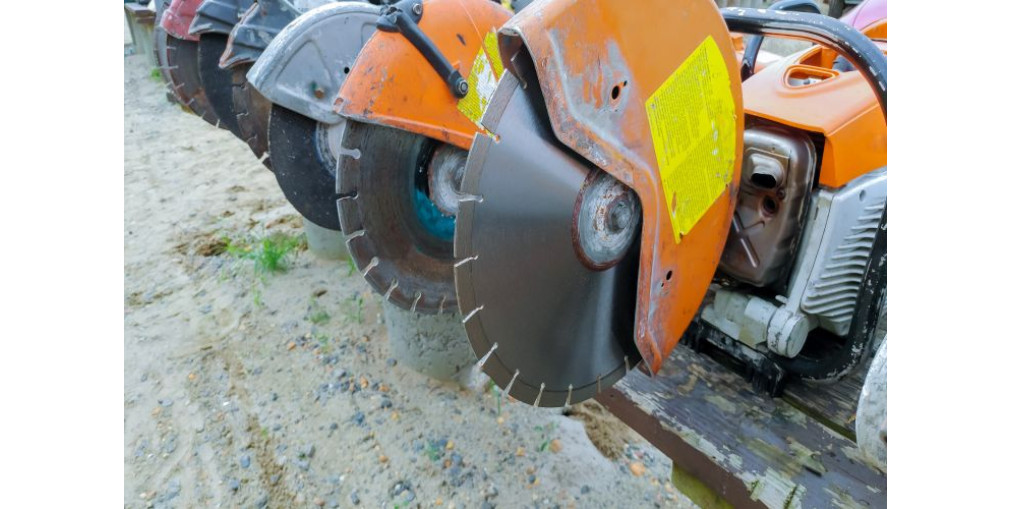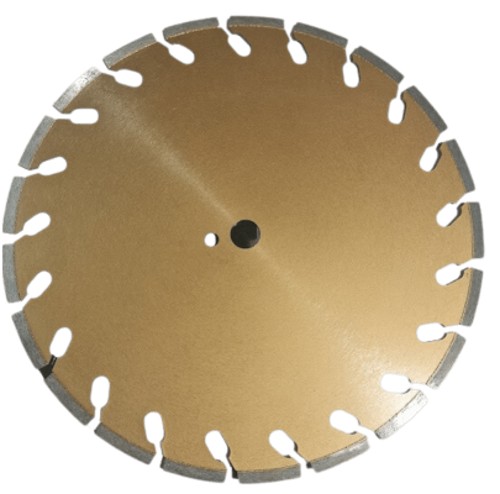
Unit 7B, 30-32 Barcoo Street, Roseville NSW 2069
Unit 7B, 30-32 Barcoo Street, Roseville NSW 2069

Do you want to ditch the traditional saw blade? If you work in the construction industry, there’s a high chance you have owned a diamond blade. Able to deliver clean and precise cuts, a brick saw is a type of masonry saw that uses a special diamond blade to grind through the hard material while being cooled with flowing water.
If you need to cut clay bricks, clay, tile, concrete, split face, granite, sandstone, marble, or bluestone, there are many things to consider when choosing the best brick saw blades.
It can be challenging to figure out which blade to use, and this article is here to explore the basics of brick diamond blades, top product recommendations, wet and dry cutting, and ideal tips for your next build!

Using and selecting brick diamond blades correctly provides great cutting speed and value for money. Conversely, using the wrong blade can damage them, won’t cut correctly, and will wear out quickly. So, with this all in mind, how can you choose the right blade?
For larger jobs, choosing a more expensive Premium Series diamond blade is better. This is because it lasts longer and is less expensive per linear cutting metre.
A lower-priced Trade Series diamond blade can also be used for occasional smaller tasks, but it’s critical to invest in a quality blade for the success of your brick project.
In the past, diamond blades needed a continuous water supply to stay cool. Diamonds were silver-soldered in place and couldn’t handle the heat. However, the diamonds on modern blades are welded on with lasers, making them significantly stronger against the elements when in use.
Keep in mind that a blade sold as a dry blade can still cut faster and last longer if you keep it cool with water. With any project, you must consider the type of saw you’re using.
Diamond blades come in a variety of sizes, most commonly between 4 and 16 inches. With blade diameter, always use the size recommended by the tool manufacturer.
If you have any concerns, speak to a diamond-cutting professional who understands how these products work.
During your cutting processes, some materials–such as travertine–can generate heat, damaging the blade and affecting the quality of the cut.
Sometimes, picking a wet saw blade with cooling properties such as vents or slots reduces heat.
What kind of saw are you using? The horsepower and RPM of the tool is an important consideration when completing your task. These saws spin at a unique RPM, and most blades are designed to spin at a specific RPM. Installing a mismatched blade on your grinder or saw can result in inefficient cutting or serious injury. For example, electric wall chasers need blades that are different from those of petrol-powered ones.
Check the blade packaging for the blade’s proper RPM range, ensuring value for money and a safe process.
What are you cutting? Correctly identify the material you want to cut before using a diamond blade, as this can affect the cutting speed and life of the blade. It also determines the type of bond to look out for. Bonds have different wear rates depending on their density, so if you’re cutting dense concrete, a soft bond performs best.
Most materials fall into four categories: hard, medium to hard, medium to soft, and soft, and you want these bonds to wear down quicker when cutting hard materials. When cutting brick or asphalt, choose a blade with a harder bond. Here are some other things to keep in mind when using a blade:
> Brick saw motors are splash-proof, not waterproof, usually IP55.
> Brick saws have big motors, ensuring sufficient power to run them.
> Don’t run off generators.
> Use only heavy-duty (2.5mm minimum, preferably mm) extension cords and keep them as soon as possible under 20mm.
> Put any other machinery on a separate circuit so as not to overload each circuit.
> Easymix saws always lock saw to sand.
> Easymix brick saws usually use two SPZX1140 toothed belts.
Need consistent performance or Diarex blades in Australia or something more specific to your project? The Diamach team can supply a masonry core drill bit, diamond cup wheel, concrete cutting blade, or flex polisher to businesses in Sydney and across Australia.
Bricks are strong, resistant to degradation, and widely used in construction. However, it is brittle and often a challenge to cut. With this in mind, what should you consider when cutting brick? Let’s dive into this now.
Made in Australia, the BT Bricksaw was developed and engineered for over 50 years and is a leading saw for bricklayers or masonry trades. With a 2hp custom-designed motor, this saw eliminates dust with a 3-way water control button, can cut bricks to any length or shape, is lightweight, has a detachable base, and can neatly fit onto any Ute or van!
Likewise, the zinc electroplating allows this saw to repel rust and corrosion, with puncture-proof tyres that can be taken into the most demanding sites.
Fine-tuned for over 30 years, the BT Bricksaw has a 6.5hp, can eliminate dust, and has a mitre guide, allowing you to cut bricks to any length or shape.
Like the electric BT Bricksaw, it is resistant to corrosion, detachable has a 3-way water control button for a hands-free water control mode, and can last for years!

305mm, these HB blades can cut the hardest of brick, paver, and stones and are excellent for prestressed and precast concrete. Offering high-grade diamonds and concentration, turbo segments make for faster cutting. Premium and Supreme quality are available.
This blade is made in Korea and is a 500mm premium hard brick blade. It has a silent laminated centre for reduced operating noise and a 10mm segment in a soft bond to cut hard brick. Want to learn more about diamond tooling and how it can benefit your industry? Have a read of the importance of high-quality stone mason tools.
What kind of blade will slice through your material? Let’s look at the most common blades used in the construction industry!
As a popular diamond blade with a wide range of uses, segmented blades are best for dry cutting as they keep the blades cool.
A higher quality blade with reduced segments, this is excellent for cutting concrete, pavers and asphalt due to its medium to hard bond!
Looking for the cleanest cutting blade? With zero serration or segments, continuous blades are ideal for cutting finished edges.
Cutting materials such as ceramic tile and porcelain, this type can be slower than other blade types and require water for cooling.
Also called a serrated blade, a turbo blade can be used for wet and dry cutting techniques. Turbo blades make fast, smooth cuts with soft to medium bonds.
Serrated edges push debris out of the way, and their soft bonds are an ideal choice for marble, natural stone, tile, and granite.
As two different cutting methods, what is the difference between wet and dry, and what will benefit you when slicing brick?
Wet cutting is the preferred option for diamond blades. A dry blade can be used wet; however, a wet blade cannot be used dry! A few seconds of dry cutting can be enough to damage a wet blade.
Using water helps to increase the lifespan of the diamond blade as it stops it from overheating, which can cause the blade to crack and lose its segments. Without cooling the blade, it can result in undercutting.
Dry cutting should only be used if the area needs to be dry or if electrical power tools are used. Fine dust created when cutting masonry, glass, and other hard materials presents a safety hazard, and water can limit the amount of dust. If dry cutting is necessary, it should be completed outdoors using a vacuum attachment.
Brick saws draw much power but still do not have the same power as petrol saws. Here are some tips and tricks for your next project to maximise their efficiency.
> Use softer blades as this supports the cutting process. Hard saw blades can overload your electric saw or cause it to overheat. Constant overheating causes your motor to fail prematurely.
> Leads. Only use heavy-duty extension leads and keep them as short as possible, ideally under 20 metres.
> Do not turn off generators. Brick saw blades are often too small for the brick saw motor. 8kVA is often recommended.
> Motor overload will trip if leads are too long or too light, have faulty power, push pavers in too hard, or bond the blade too hard. If overloads trip out too often, they can get damaged.
> Electric motors are often IP55 rated, protected against dust ingress, and water-resistant, although not waterproof. Most electrical problems occur after saws have been left in the rain.
> Pay attention to silica dust. When workers cut, drill, crush, polish, saw, or grind products that contain silica. Particles are created one-hundredth the size of a grain of sand, which can get stuck in the lungs. Always have precautions in place.
> Always allow the blade to cut. Never force it!
With over 25 years of blade and tool development expertise, Diamach can provide you with the best precision and diamond tooling. Put simply, you need a trustworthy team if you’re looking for diamond-edged, tipped tools and equipment, and we’re here to lend a helping hand. Whether you’re a stonemason, plumber, landscaper, or concrete cutter, we have a variety of flex tools, EHWA diamond tools, diamond hand polishing pads, diamond core drills, and more to offer. Get in touch for advice or technical support.